Quick Reference
Around 1930 or '31
Marlboro, VT
Oil on Canvas
Landscape
Churches, Buildings
40" x 50"
Grand Central Galleries (NYC),1931
Myles Standish Gall., 1931, '35, '44
Williston Academy, 1932
Deerfield Academy, 1932
Northfield Seminary, 1933
International Rotary Convention,
Mechanics Hall, Boston, MA, '33
Boston Art Club, 1933
Amherst Coll. Jones Library, '34
Dallas (TX) Museum FA, 1936
MacBeth Galleries (NYC), 1937
Mr. Francis B. Garvan
NA
Featured Artwork: Enduring New England
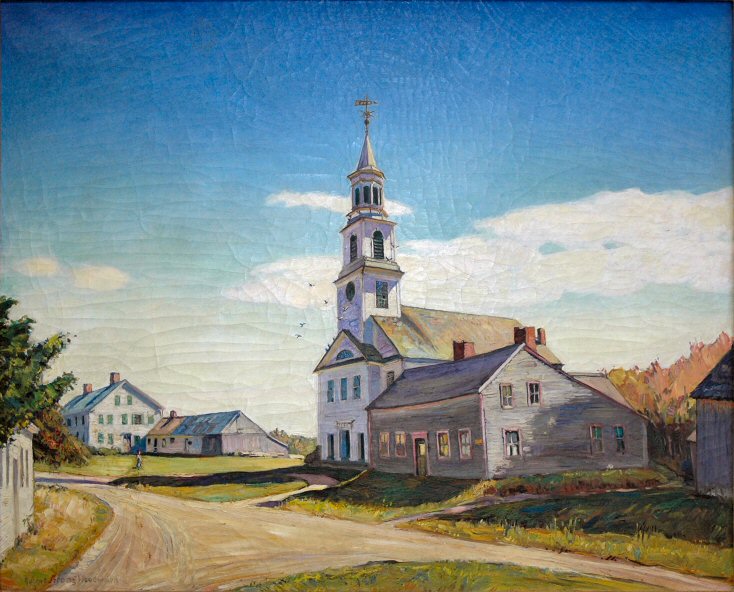
RSW's Diary Comments
"Painted around 1930 or '31. Painted at Marlboro, VT of the rare old church there, built in revolutionary times. Made this 40" x 50" at the spot in the car. Exhibited very generally about the country. One of the very few of the church canvases gotten down to Macbeth's in time for Mr. Francis B. Garvan to see before his sudden and untimely death. He bought it and presented it to the Yale Museum of Fine Arts in New Haven, Conn. where it hangs in their permanent collection--- the only one of many of mine which were to hang there--- had not Mr. Garvan died. A year after I painted this, the old church burned and my painting of it seen at the Grand Central Art Galleries, was used partly as pattern to build a new but smaller replica in Marlboro."
Comments on the back of a sepia print:
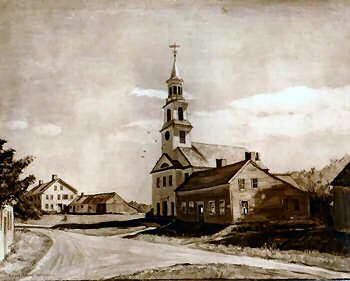
Sepia Print: Enduring New England
"Learning that you are connected in some way with Brattleboro, I send this photograph of my painting Enduring New England
which was made in Marlboro, Vermont, a place you unquestionably know in your journeys to and from Halifax. I made the painting of the
rare old church 4 or 5 summers ago, the season before it was burnt to the ground. This canvas hung at the Grand Central Art Galleries,
#15 Vanderbilt Avenue, N. Y. at the time the church was burned. Strangely, the man who had been chosen to design the new church in
duplicate, saw the painting there, was very much interested and used my painting partially as model for the new structure. It
occurs to me, that if in remodeling your Halifax house, you are possibly hoping to duplicate the old red ell, my painting might be
of slight assistance to you. I imagine that sills and beams are quite too far gone to save as they are. Of course the ell still
stands and of course my painting was made in its state of graceful dilapidation, so this canvas may not be of any practical use to
you at all. But if it should happen that it might be of use to your architect, and I still have it in my possession at the time,
you are very welcome to use it. I would feel honored if for any way I could contribute to the remodeling or restitution of the dear
old Halifax house."
Signed: Robert Strong Woodward
Note
(The above was written on the back of a sepia print of a photograph of this painting and then subsequently scratched out by RSW with a heavy pencil.)
Additional Notes
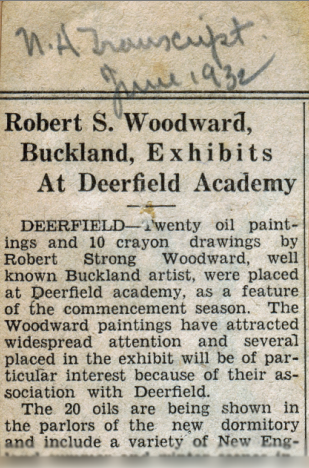
 North Adams Transcript, June, 1932
North Adams Transcript, June, 1932
Owned by the Yale University Art Gallery, Mabel Brady Garvan Collection, New Haven, Ct.North Adams Transcript, June 8, 1932 "...The largest has been hung over the fireplace and is called Enduring New England. It shows a village church and common and a few houses and bares striking resemblance to a scene at Marlboro, Vt., although it might be almost any typical New England village. "For Provenance click here for The Story of Marlboro, VT church paintings.
North Adams Transcript, December 9, 1932:
"The fireplace at the dormitory and depicts an 'Enduring New England' village church and common reminiscent of Marlboro, Vt. "
 This painting hung in the new dormitory on the Deerfield Academy campus in 1932. It was in many ways a marketing campaign
to promote the school and its continued growth. The exhibit itself was the inspiration of the school's headmaster at the time, Frank L. Boyden. It was so successful, that Boyden personally
asked Woodward if it was possible to extend it through June to the Fourth of July. Woodward had to scramble just a bit because a number of the paintings were committed to other shows but
he managed to accommedate the school.
This painting hung in the new dormitory on the Deerfield Academy campus in 1932. It was in many ways a marketing campaign
to promote the school and its continued growth. The exhibit itself was the inspiration of the school's headmaster at the time, Frank L. Boyden. It was so successful, that Boyden personally
asked Woodward if it was possible to extend it through June to the Fourth of July. Woodward had to scramble just a bit because a number of the paintings were committed to other shows but
he managed to accommedate the school.

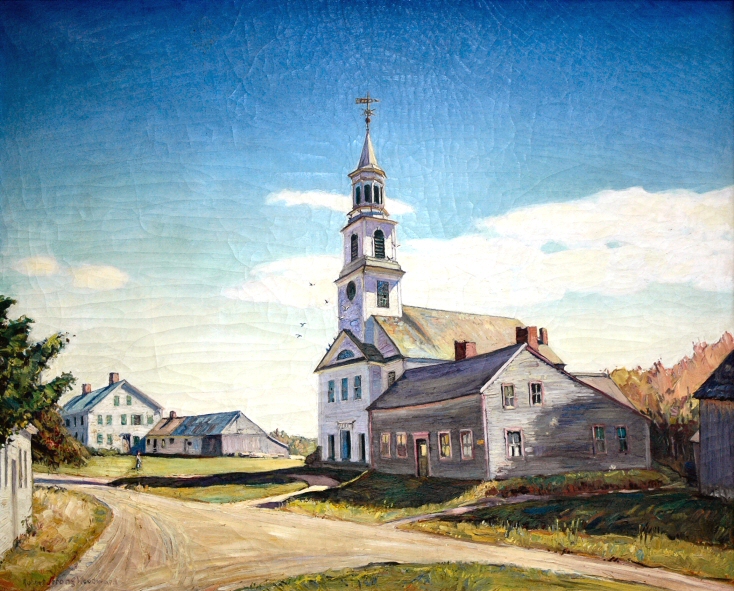
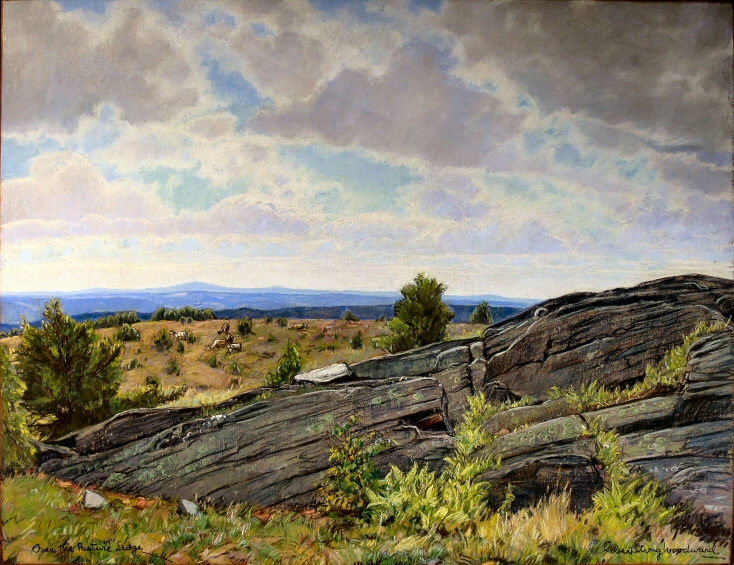
.png)
